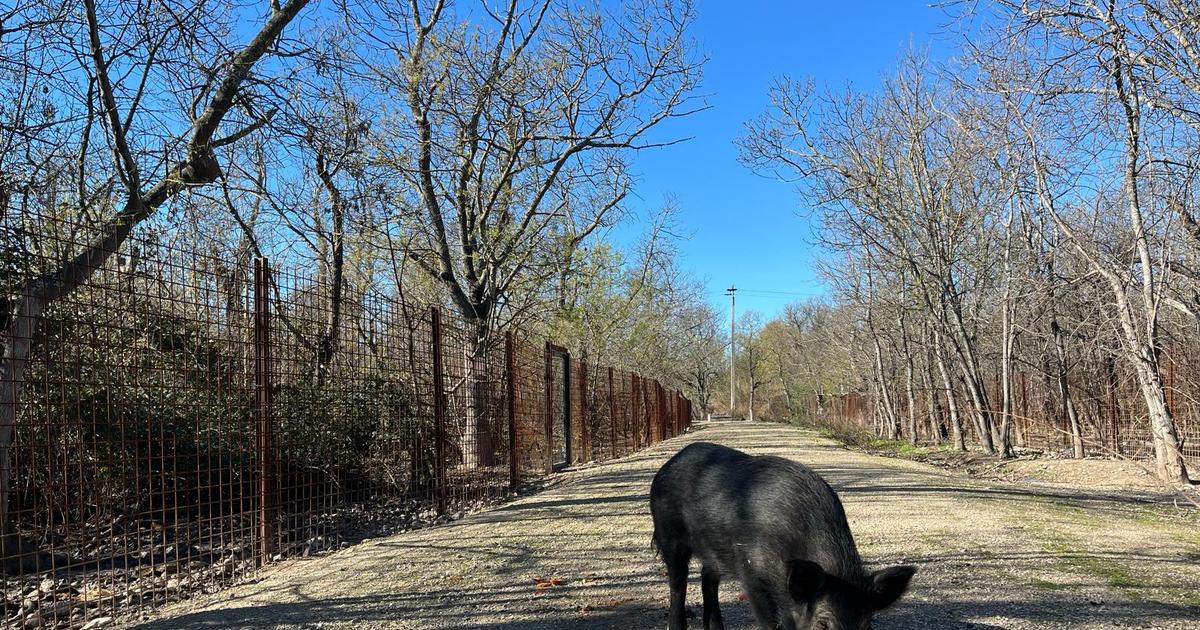Gaston Guido
08/21/2021 5:40 AM
Clarín.com
Rural
Updated 08/21/2021 5:40 AM
With different enthusiasm, highlighting achievements, recalling pending issues, more or less adverse situations, or explaining some achievements, several protagonists of Argentine pork activity agree that pork has everything to grow in the country, to the point that it would have no ceiling .
"Prices and profitability improved, due to higher domestic demand," says Adolfo Franke, president of the Argentine Association of Swine Producers (AAPP), who highlights that the price of a live kilo is $ 133, having reached $ 115 in last fall, while, so far this year,
production increased 8.7% and consumption 9%.
For Juan Uccelli, director of JLU Consultora, from January to July of this year, production increased 6.5%, with a first semester that “was complicated by the rise in corn and soybeans.
But unlike in 2020, there was always profitability.
The price went up in steps.
In July it rose and is currently increasing.
Costs went up, but the selling price also went up.
The gross margin was always above the cost of production ”, he highlights.
Adolfo Franke, president of the Argentine Association of Swine Producers (AAPP)
According to its data, prepared on the basis of official information,
in the first 7 months of the year, the country exported 13.5% more compared to the same period in 2020
.
Here it is worth clarifying that, until June 2021, Argentina exported 40% more than in 2020, but there was a big drop that month, due to problems in China, where its production costs rose, due to the increase in the international price of soybeans.
Juan Uccelli, director of JLU Consultora
This caused that, in the face of a drop in the domestic price, in China, entire pig farms closed there, whose animals were slaughtered, which is why, by increasing its meat production, between May and June, China starred in a great withdrawal of the world market, between June and July.
This explains the drop in the international price of pork and that Argentina, which exported 80% to China, lowered its external sales from 6,000 to 1,000 tons per month.
Pig exports.
For more markets
To this description, Guillermo Proietto, General Manager of the Argenpork Consortium, which brings together producers and meat exporters of pork, adds that "
the values of the ton of pork went from 3,000 to 2,000 dollars, below production costs from Argentina
and other countries ”and that“ between July 2021 compared to the same month of 2020, exports fell 75% ”.
To
avoid great dependence on the Chinese market
, he comments that “work is being done to open markets such as Singapore, Vietnam and Uruguay, countries that are in the most advanced stage of this process, and the Philippines and other Asian countries, where the procedures will take longer. ”.
In these negotiations, Argenpork has a good dialogue with the Foreign Ministry and is already working with Senasa.
Export production ratio
Proietto added that “we are going to meet with officials from the Ministry of the Economy to raise the current problems that we have and see what help we can have so that we do not stop exports.
Although we do not see that China traction in this second semester, even so, new markets can continue to be opened, exporting certain types of cuts that have a specific demand.
There is always an alternative, so it
is important to review the retentions that our exports have
(5%) and hope that the markets begin to recover slowly;
the worst is over ”, he assures.
Guillermo Proietto, General Manager of the Argenpork Consortium
In this regard, Franke adds that “the exchange rate favors imports, whose interannual variation was 69%, and makes exports more difficult, with an interannual variation of 7%.
Most of the imports come from Brazil, something that we see with some concern, because the bondiola and the most demanded cuts enter ".
Competitive price
Regarding imports, Uccelli agrees with Franke that they have risen so far in 2020, but adds that “as of July 31, when production increases in a month, exports fall and imports rise and there is more pork available ”, which in theory should have caused a drop in the price of capon.
“It went up here,” he explains, “because the Horeca channel (hotels, restaurants and catering), which was not around in 2020, began to move,
restaurants opened and include pork on the menu
, and company catering (factory canteens, no events) consume a lot of pork, because there was a lot of difference between the price of pork and beef ”.
Although the price of pork and demand increased, the value to the public of beef also rose and pork is an average 30 to 35% lower, being attractive to the Argentine consumer.
Slaughter and production.
For Uccelli,
this year the activity will grow 6.5% due to efficiency
, because we have more kilos of meat produced per mother, but not due to investment.
Today there is export, the domestic market is very competitive and there is the possibility that, if there were more production, there would be no import.
In his perception, 2021 will close as a very good year for pigs, better than 2020, which was already good, and they would already be consuming about 20 kilos per inhabitant and per year of pork, although 16.5 are officially recognized kilos.
To increase production, two things are needed: "to solve the VAT on investments that since 2018 implies that we have a sales VAT of 10.5% and to build a farm the VAT is around 20% and credits to invest"
More sows in production
Just weeks ago, the Ministry of Productive Development launched a specific credit line for pig activity.
This is an initial amount of 2,500 million pesos, destined to incorporate productive sows in farms.
They cover 80% of the investment and are for a 7-year term.
They have a fixed annual rate of 22%, until the fifth year, rising in the last 2 years, to 24% and 30%, for medium and large companies, respectively, with a 12-month grace period.
Franke explained that "this line is the result of a claim from the activity and that it will be granted through Banco Nación, against the presentation of projects that the Ministry must approve."
Such a claim is actually the Pig Strategic Plan, presented by the AAPP, last April, one of whose points included the need for financing.
At the request of the Productive Development authorities, the AAPP carried out a survey of some 70 companies with projects that apply to this line and that added
the incorporation of 50,000 productive sows in the farms
.
"They are of different sizes, but on average they would incorporate about 700 sows per company," he said.
Look also
From the Rosario Stock Exchange they asked to eliminate restrictions that affect exports









/cloudfront-eu-central-1.images.arcpublishing.com/prisa/RQOIVGVVQYQD3ILPTU3PLOVE6Q.jpg)



/cloudfront-eu-central-1.images.arcpublishing.com/prisa/KMEYMJKESBAZBE4MRBAM4TGHIQ.jpg)

